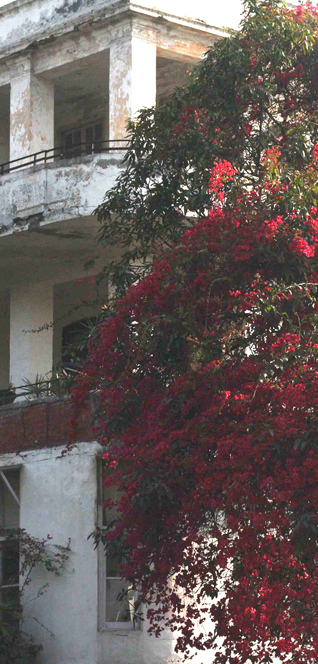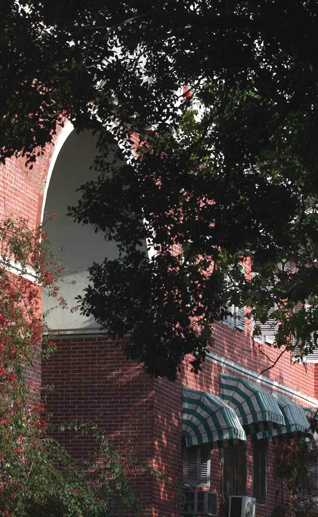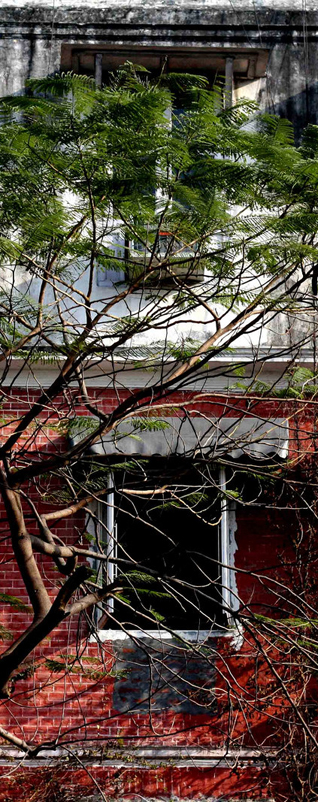Architecture
The Neighbourhood:
Sujan Singh Park, New Delhi
MAYANK AUSTEN SOOFI
Green creepers cover the red brick walls.
Hibiscus vines frame the windows.
Pink bougainvilleas climb to higher balconies.
A large mulberry tree graces the lawn at the center.
The apartments, with their high ceilings and fire places, betray their colonial-era loyalty.
Sujan Singh Park in central Delhi is rumoured to be the address of the bookish gentry. The drawing rooms are, apparently, shrines to antique hardbounds. The curtains are said to be embroidered with verses of great poets. Every home is believed to be inhabited by a published author.
Author Khushwant Singh was the most famous resident here. The plate beside his door-bell says: “Please do not ring the bell unless you are expected.”
In his book Absolute Khushwant: The Low-down on Life, Death, and Most Things In-between, Khushwant Singh wrote, “Most of the trees in my garden in Sujan Singh Park have been planted by me – kadam, kusum, a bush of gardenia, a couple of jasmines, a raat ki rani and some avocado trees.”
Khushwant Singh's father, Sir Sobha Singh, was the man behind Sujan Singh Park -- and, of course, the building of much of New Delhi,. A building contractor thriving at a time when the British were creating a new city in the early 20th century, the senior Sardar named this little plot of land after his father -- Sujan Singh.
The rarefied society of Sujan Singh Park is inaccessible to The Delhi Walla. I’m told that its evenings are composed of finely-orchestrated soirees. The attendees are members of the uppermost level of New Delhi’s social order. They are diplomats, bureaucrats, authors, journalists and other upper class English-speaking secularists – some of them have even supped with the mighty and the powerful.
In her 2012 book English Heart, Hindi Heartland: The Political Life of Literature in India, the US-based anthropology professor Rashmi Sadana described Sujan Singh Park as the “epicentre of Delhi’s English-speaking elite.” She wrote:
“The area happens to be a tiny colony by Delhi standards but it is where the city’s linguistic, social and architectural capital meet. One writer described Sujan Singh Park as forming “a golden triangle” with the India International Center and the India Habitat Center, and, in a more satiric vein, calls it “the land of the concerned liberal, pale pink in hue, likely to be clad in handspun and rarely in synthetic, with some ancient books and jewels and old frames with ancestors to add a touch of vintage and class.”
One day soon the right-wing zealots will take over Delhi. To remain relevant, the capital’s well-connected liberals will be obliged to reorient their ideals.
And evenings in Sujan Singh Park will continue as before.
[Courtesy: The DelhiWalla. Edited for sikhchic.com]
March 30, 2014





